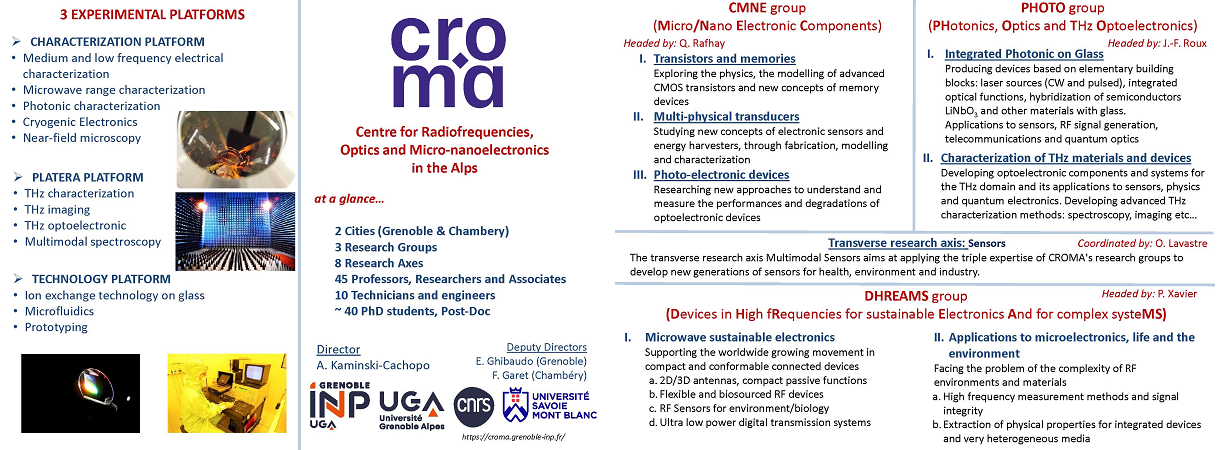Presentation
History
Created in 2007, the laboratory is part of a long-standing tradition on the site concerning the study of components, integrated devices and systems, whether electronic, electromagnetic or photonic. This work is carried out in constant interaction with the socio-economic and scientific environment of both sites, as demonstrated by the laboratory's history.
The laboratory TODAY
Research activities of CROMA cover large areas (materials, technologies, components, circuits and systems) which allow carrying out multidisciplinary research in common with our partners in nanophysics, material chemistry, circuit designers or system manufacturers in electronics and optoelectronics.Such activities are regrouped in 3 research themes with potential applications (semiconductors, informatics, telecommunications,) representing important goals for economy of next decades.
3 research teams
Situated at convergence of many sciences and technologies, CROMA can play an important federating role to develop ambitious projects and to challenge the future of electronics.
Staff
- 110 staff members
- 45 professors (full and associates)
- 10 engineers, technicians, administrative staff
- 40 PhD students & Post-doc






